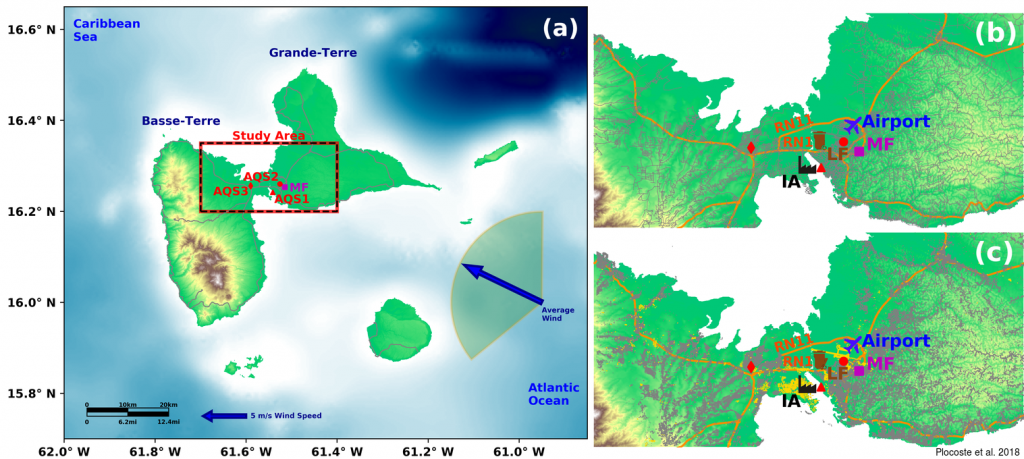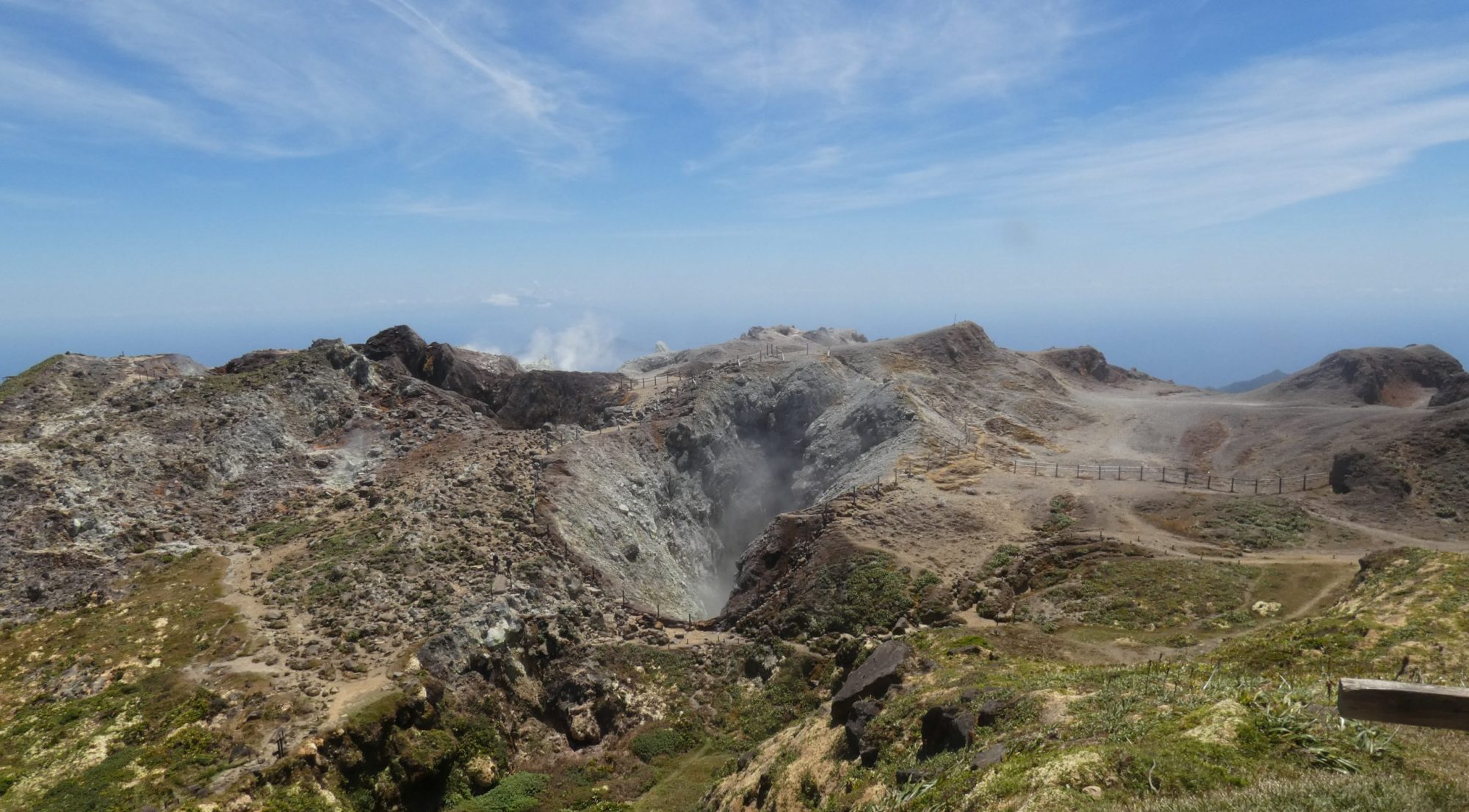
TCGNRG recently published in collaboration with the University of the Antilles (Campus of Guadeloupe) an article on air quality in the center of the archipelago of Guadeloupe
Abstract
This paper presents a study on ground-level ozone (O3), nitrogen oxides (NOx = NO + NO2) concentrations, and their variabilities in the ambient air of three sites of a tropical archipelago that is moderately urbanized. Statistical analysis was performed on a quite complete (>80%) set of 5 years of measurements (2008–2012). There are few studies on those pollutants and their seasonal behavior in the Caribbean area, where pollution level and cities configuration are different from megacities. Analyses are focused on pollutant variations at the scale of the day, the week, and the seasons, using hourly data.
The observations show that NO x concentrations are more elevated during the wet season, whereas O3 concentrations are higher in the dry season. Amplitudes of ozone cycles are strongly influenced by meteorological conditions (temperature, global radiation, and wind speed) and prevailing levels of NOx.
An ozone weekend effect is detected with the highest amplitude in the city, where anthropogenic activity is the lowest during the weekend. Due to the nature and the origin of pollutants, NO x shows higher variability than O 3 in the time series. Our results evince the need for continuous measurements of volatile organic compounds (VOCs) in order to better quantify their contribution in O3 formation in an insular context where numerous natural sources have been identified.
Implications
Statistical analyses of observed NOx and O3 concentrations for 5 years for a typical low industrialized site of the Caribbean area have been done. Air quality for those components is correct based on the standards of the World Health Organization, pollutant source spatial distributions, and level of industrialization. Observations show the same patterns as in megacities but also a strong impact of weather conditions and road traffic. Behaviors of O3 cannot be fully explained without VOCs monitoring. Localization and type of AQS should be reconsidered to improve the accuracy of concentrations of the pollutant and better understand their behaviors.
Where to get it
The article is available on the website of the editor Taylor & Francis
For more information please contact us at : contact@tcgnrg.com

